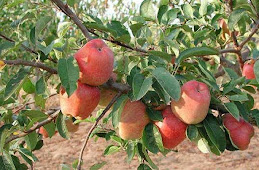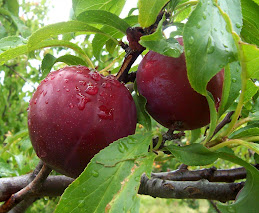Source Website: http://health.asiaone.com/Health/Eat%2BRight/Story/A1Story20100728-229333.html
By Alefia Vasanwala, Wed, Aug 04, 2010, AsiaOne
 PHOTO: A federal nutrition panel says to consume more vegetables and whole grains
PHOTO: A federal nutrition panel says to consume more vegetables and whole grains
http://si.wsj.net/public/resources/images/OB-IX010_0615FR_G_20100615194925.jpg
http://hotcrisp.spaces.live.com/?_c11_BlogPart_BlogPart=blogview&_c=BlogPart&partqs=cat%3DThe%2520Wall%2520Street%2520Journal PHOTO: 8 dietary guidelines for diabetics
PHOTO: 8 dietary guidelines for diabetics
http://www.asiaone.com/a1media/health/04Apr10/images/20100405.155150_barleygood.jpg
http://health.asiaone.com/Health/Eat%2BRight/Story/A1Story20100728-229333.html
A well balanced diet helps to reduce blood sugar levels and is the cornerstone of diabetes management.
A healthy diabetic diet provides 45-60% of the calories from the carbohydrates, 10-15% from proteins and less than 30% from fat.
Guidelines for a diabetic diet include:
1. Maintaining ideal body weight. If one is obese, lose the excess weight to achieve a healthy body weight.
2. Limiting intake of refined sugars to less than 10% of total calories.
3. Distributing daily calories between 3 main meals and 3 small snacks for a day.
4. Being careful about when and how much carbohydrate is eaten at each meal.

PHOTO: What you eat (and don’t) may play a major role in your risk of developing type 2 diabetes, according to a new study from researchers at Tulane University and Harvard School of Public Health who tracked the eating habits of more than 71,000 women for 18 years.
http://www.aggiefit.org/images/articles/36/mpj04026720000_1_.jpg
http://www.aggiefit.org/Articles/articles.htm
5. Including high fiber food like whole grain foods, fruits and vegetables in the diet. Foods low in GI help in management of blood sugar levels. However, one must exercise portion control. Examples of low GI foods are rolled oats, muesli, whole grain bread, brown rice/unpolished rice, vegetables like, cauliflower and cabbages and fruits like plums, cherries and grapefruit and dairy products like low fat milk and natural yoghurt.

PHOTO: ADD: Leafy greens. For every additional serving of spinach, kale, or chard you eat, you may lessen your likelihood by as much as 9%. ADD: Whole fruit. For every three servings, you may slash your diabetes risk by up to 18%. AVOID: Juice. Consuming one serving a day may raise your odds by nearly 18%. Some varieties are rich in antioxidants, but if you’re at risk of diabetes, consider trading your daily glass of juice for whole fruit. Stephanie Breakstone, Prevention, January 2009
http://www.aggiefit.org/images/articles/38/mpj04373820000_1_.jpg
http://www.aggiefit.org/Articles/articles.htm
6. Limiting total fat calories to less than 30% of the total calories, and restricting saturated fat to less than 10% of the calories while including more monounsaturated fats in the diet. Sources of monounsaturated fats are olive oil, peanut oil, canola oil, avocados and certain nuts and seeds
7. Maintaining a healthy lipid profile by consuming foods which are low in saturated fats and cholesterol.
8. Limiting one's alcohol intake
It is important to know that no single food can help in the management of blood sugars for a diabetic. Instead, it is important to have a well-balanced diet which includes all food groups. This, coupled with lifestyle changes such as incorporating regular exercise, is the best way to remain healthy.
By Alefia Vasanwala, Wed, Aug 04, 2010, AsiaOne
Miss Alefia Vasanwala is a dietitian at Mount Elizabeth Hospital.
 PHOTO: A federal nutrition panel says to consume more vegetables and whole grains
PHOTO: A federal nutrition panel says to consume more vegetables and whole grains
http://si.wsj.net/public/resources/images/OB-IX010_0615FR_G_20100615194925.jpg
http://hotcrisp.spaces.live.com/?_c11_BlogPart_BlogPart=blogview&_c=BlogPart&partqs=cat%3DThe%2520Wall%2520Street%2520Journal
Reference








































.jpg)
.gif)
.jpg)
























































